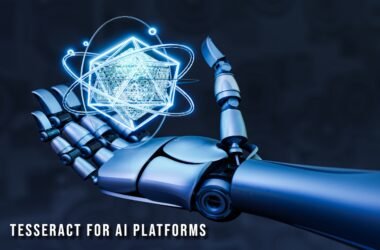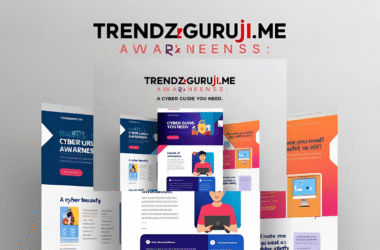Organizations must strategically align their IT staffing needs to enhance overall performance. Effective IT staffing is crucial for not only maintaining day-to-day operations but also for driving innovation, improving customer experiences, and achieving competitive advantages. This article delves into the essential strategies for optimizing IT staffing to meet the demands of a dynamic marketplace.
Understanding the Importance of IT Staffing
IT staffing is the backbone of any technology-driven organization. With the rapid evolution of technology, companies are increasingly reliant on skilled IT professionals to implement and manage their systems, applications, and cybersecurity measures. An optimized IT staffing strategy ensures that businesses have the right mix of talent, skills, and experience to support their operational goals and strategic initiatives.
Assessing Current IT Capabilities and Needs
Before optimizing staffing strategies, organizations need to conduct a comprehensive assessment of their current IT capabilities. This involves evaluating the existing skill sets of IT staff, identifying gaps in expertise, and understanding how these gaps affect business performance. By leveraging tools such as performance reviews, skills assessments, and employee feedback, businesses can gain valuable insights into their IT team’s strengths and weaknesses.
Strategic Workforce Planning
Once organizations have a clear understanding of their current IT capabilities, the next step is to engage in strategic workforce planning. This process entails forecasting future IT needs based on technology trends, business objectives, and potential market shifts. Companies should consider various factors, such as software development demands, data management requirements, and emerging technologies like artificial intelligence and machine learning.
By aligning staffing strategies with business goals, organizations can ensure they are prepared for upcoming challenges and opportunities. For instance, if a company plans to launch a new digital product, it will need to assess whether its IT team has the necessary skills for software development and project management.
Embracing Flexible Staffing Models
In a competitive landscape, flexibility in staffing is essential. Organizations must be willing to adopt various staffing models, such as full-time employees, part-time workers, contractors, and freelancers. This approach allows companies to scale their workforce according to project demands and budget constraints.
For example, during peak project periods, hiring temporary staff or consultants can provide the additional expertise needed without the long-term commitment of full-time hires. Additionally, remote work options have opened up a broader talent pool, enabling businesses to access specialized skills that may not be available locally.
Fostering a Culture of Continuous Learning
The technology landscape is ever-evolving, which necessitates a culture of continuous learning within IT teams. Organizations should invest in training and development programs to enhance their employees’ skills and knowledge. Providing opportunities for certifications, workshops, and online courses can help IT staff stay current with industry trends and technologies.
Moreover, encouraging cross-training among team members can create a more agile workforce. By allowing employees to develop skills in different areas of IT, businesses can ensure that they have versatile teams capable of adapting to changing project requirements.
Leveraging Technology for Recruitment and Staffing
To optimize IT staffing, organizations can leverage technology solutions that enhance the recruitment process. Applicant tracking systems (ATS) and artificial intelligence-driven recruitment tools can streamline the hiring process by automating resume screening and candidate assessments. These technologies help identify the best candidates more efficiently, reducing the time and resources spent on recruitment.
Moreover, utilizing data analytics can provide insights into hiring trends, candidate performance, and employee turnover rates. This information can inform future staffing decisions, helping organizations refine their strategies and improve retention rates.
Focusing on Employee Engagement and Retention
While attracting top talent is critical, retaining skilled IT professionals is equally important. High turnover rates within IT departments can disrupt operations and lead to increased costs. Organizations should prioritize employee engagement strategies to foster a positive work environment.
Regular feedback, career progression opportunities, and recognition for achievements can significantly enhance job satisfaction among IT staff. Additionally, offering competitive compensation and benefits packages is essential in retaining top talent in a competitive job market.
Building a Strong Employer Brand
In a competitive landscape, a strong employer brand can be a powerful tool for attracting and retaining IT talent. Organizations must emphasize their unique value propositions, such as innovative projects, inclusive cultures, and opportunities for career growth.
Effective branding can be achieved through targeted marketing campaigns, showcasing employee testimonials, and highlighting company achievements. By promoting a positive image, businesses can distinguish themselves from competitors and attract high-quality candidates eager to contribute to their success.
Collaborating with Educational Institutions
To meet the growing demand for skilled IT professionals, organizations can establish partnerships with educational institutions. Collaborating with universities and technical schools can create talent pipelines, providing opportunities for internships, co-op programs, and mentorships.
Such initiatives not only help organizations identify potential hires early but also contribute to the development of a skilled workforce tailored to industry needs. By engaging with students and faculty, businesses can ensure that the curriculum aligns with current technology trends, enabling graduates to enter the workforce with relevant skills.
Optimizing Your Business
Optimizing IT staffing strategies is essential for enhancing business performance in a competitive landscape. By assessing current capabilities, engaging in strategic workforce planning, embracing flexible staffing models, and fostering a culture of continuous learning, organizations can create a robust IT team poised to meet future challenges. Leveraging technology in recruitment, focusing on employee engagement, and building a strong employer brand are also critical components of an effective staffing strategy. Ultimately, organizations that prioritize these strategies will be better positioned to thrive in an ever-evolving technological landscape.








